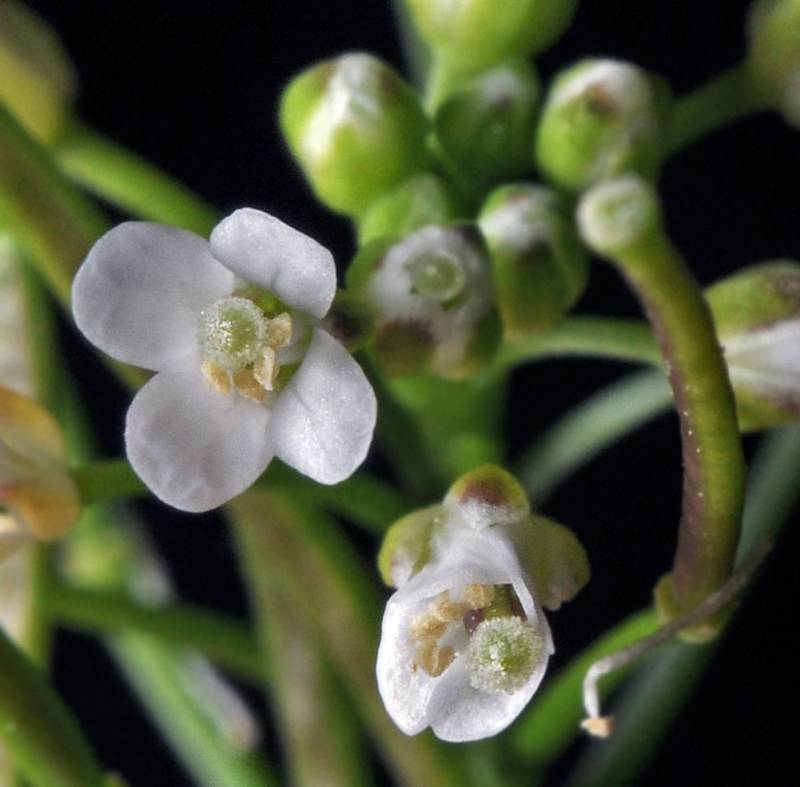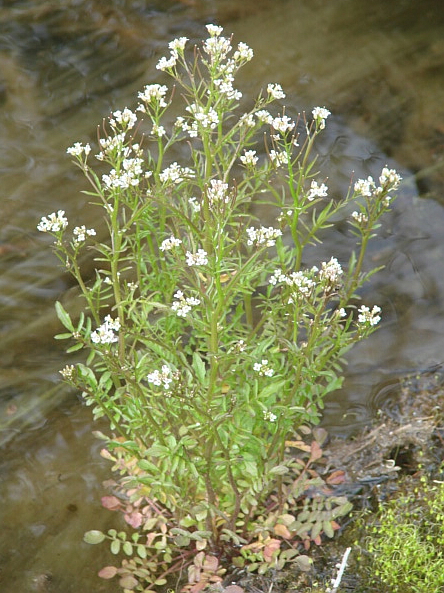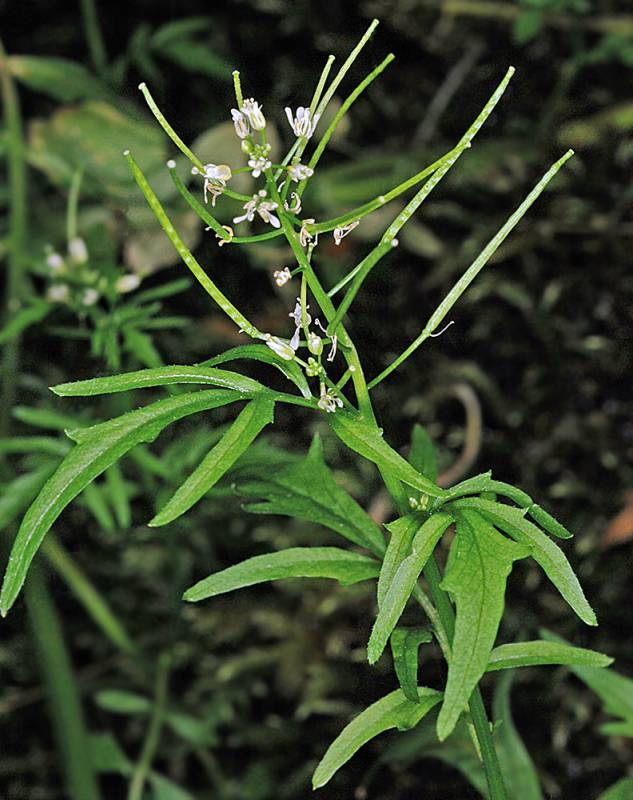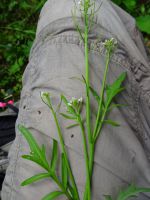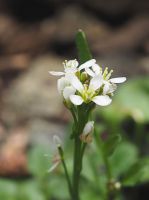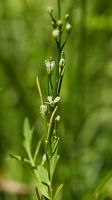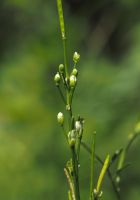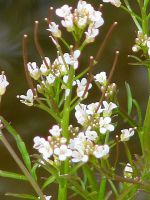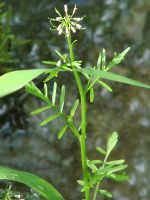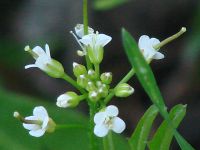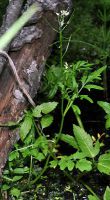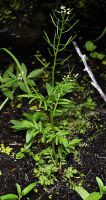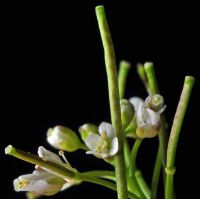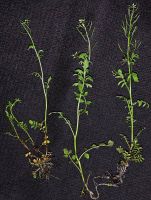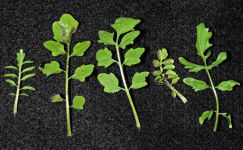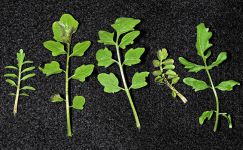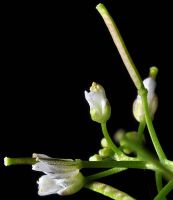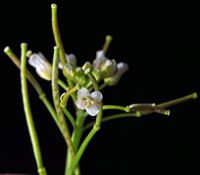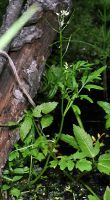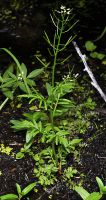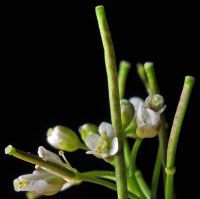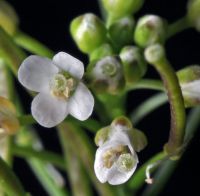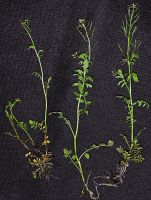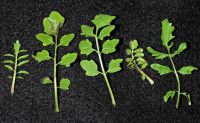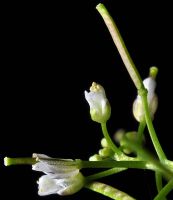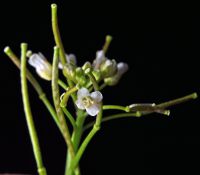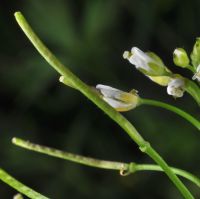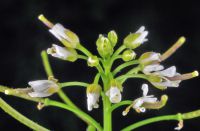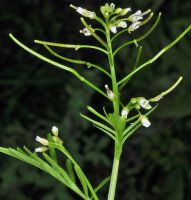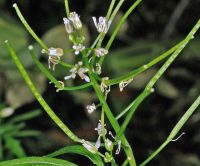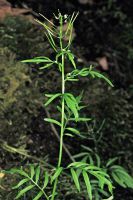Distribution: Widespread on both sides of the Cascades crest in Washington; British Columbia to California, east through the Rockies to the Atlantic Coast.
Habitat: Moist to wet soils, or on the margins of wet areas.
Flowers: April-July
Origin: Native
Growth Duration: Annual, Biennial, Perennial
Conservation Status: Not of concern
Pollination: Bees, flies
Annual or biennial herb from a taproot, the 1-several stems 1-4 dm. tall, usually freely-branched, sub-glabrous or with short, stiff hairs.
Leaves alternate, numerous, basal and cauline, pinnate, the lateral leaflets 4-10, linear or lanceolate to oblanceolate, 3-20 mm. long, entire, the terminal leaflet considerably larger, with a few rounded teeth; all pubescent as the stem.
Inflorescence of several-flowered racemes, usually bractless, but sometimes the lower flowers bracteate; pedicles 5-15 mm. long, ascending-erect; sepals 4, 1-2 mm. long, the outer pair saccate at the base; petals 4, white, 2-4 mm. long; stamens 6; style under 0.5 mm. long.
Siliques linear, erect, 1.5-2.5 cm. long and 0.7-1 mm. broad; seeds 24-40, in 1 series.
Publication: Sp. Pl. 3: 486. 1801.
Cardamine hirsuta L. var. pensylvanica (Muhl. ex Willd.) P.W. Graff
Dracamine pensylvanica (Muhl. ex Willd.) Nieuwl.
PNW Herbaria: Specimen records of Cardamine pensylvanica in the Consortium of Pacific Northwest Herbaria database
WA Flora Checklist: Cardamine pensylvanica checklist entry
OregonFlora: Cardamine pensylvanica information
E-Flora BC: Cardamine pensylvanica atlas page
CalPhotos: Cardamine pensylvanica photos

